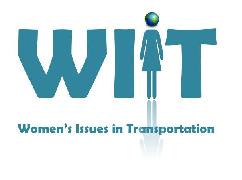 |
5th International Conference on Women's Issues in Transportation - Bridging the Gap
14-16 Apr 2014 Paris - La Défense (France)
|
Themes and topics > Transportation impacts on careers and careers impacts on transportation - Pillar 4Despite advances, management of domestic and family life falls mainly to women. In all locations women generally have far more complex programs of activity than those of men due to their double working day, in which usually women not only have to take care of domestic chores, children, sick or elderly relatives, but also participate in productive activity. The time lost in travelling is therefore far more penalizing for women. So women are especially concerned with the problem of sharing time between managing domestic and family life along with their professional (or any wealth creating) activity.
Work and mobility are two fundamental human and therefore societal activities. Work and professional activities often require time outside of one’s home. The vast majority of work requires some mobility. So, mobility impacts on productivity, on the access to different kinds of job, and therefore affects the careers of women.
Transport and travelling consists of constraints of time and temporal cycles. Daily travel is typically a loop where one begins at and returns home. Apart from a work commute, people may conduct other business related to domestic life. As women conduct more of such activities, access and time spent travelling may be even more crucial for women.
The difficulties faced by women with regard to their mobility are a form of societal exclusion, which affects all aspects of their lives and in particular hinders the economic output and health of women. All these factors restrict women’s mobility and often influence the difference between women and men in the job market.
Work, professional or any productive activity and mobility overlap at different scales which can be classified as follows:
Although women’s specificity related to work and occupation has been described on many occasions, and the above aims to solicit research on the specific relationship for women between work and mobility, women are not only users of transportation.
Indeed women are under-represented in research, in design, in policy making, in business ownership, in governance and oversight, etc.. At the same time equipment and facilities are sometimes designed for women only by default. Finally, there is substantial evidence that women, overall, often do not access a fair share of the wealth generated in the transportation sector, that is around 9% of GDP of nations. As a consequence, women are generally not in a position to adequately contribute to, impact, engender and improve the transportation sector. Issues here are the inadequate participation of women to the business of transportation: under which conditions women are allowed for example to fully participate in service delivery, in the transport sector, improving its governance and its inclusiveness. Under which conditions increasing participation of women to the planning of road management and the ownership of women to the business of road construction have beneficial impacts on the efficiency of the road system, as well as the wealth generation of the sector. |
| Online user: 1 | RSS Feed |

|
